Reporting back from ETHO Session: Setting Up a Bio-Lab
Wednesday 20 April 2022
Did you happen to miss the last ETHO Session? Are you interested in creating your own BioLab? ETHO member and event host, Emma van der Leest reports back on this inspiring, eco-friendly hands-on event. Read her report below.
The world is in constant motion, and that motion is of flora and fauna, man and mechanics that art school students are increasingly mapping out in their work. We witness the broad development of transdisciplinary arts education focusing on circular economy, biodesign and exploring new narratives that work towards an environmentally friendly future. On 26 February, 2022 ELIA/ETHO invited three international institutions to learn, disseminate and discuss what would be needed to set up a biolab within their institution. Willem de Kooning Academy (Netherlands) initiated this webinar in their research to start a bio/living lab in their institute. Rhode Island School of Design (USA), University of Ghent (BE) and Aalto University (FIN) shared a unique insight of their labs. Over 140 participants joined online.
ELIA is a globally connected European network that provides a dynamic platform for exchange and development in higher arts education. The principal mission of ELIA is to represent Higher Arts Education and to be an influential voice and advocate in promoting the interests of its members. In placing emphasis on the value of arts education and artistic research, ELIA is dedicated to enhancing the conditions in which Higher Arts Education can flourish, nationally and internationally. ETHO (European Technical Heads Organisation) is a network of higher arts education technical staff.
After a warm welcome from Maria Hansen, executive director of ELIA, host Emma van der Leest kicked off. She emphasised the need for organising this webinar. More and more academies – not only in the Netherlands but from far and abroad, are creating Bio/Nature labs for students to investigate solutions in combination with their artistic practice addressing the current climate crisis. Van der Leest is an alumnus of the Willem de Kooning Academy, graduated cum laude in 2015 with research into the collaboration between science and the creative industries. After her studies she founded BlueCity Lab in Rotterdam, part of BlueCity, to lower the threshold for anyone who wants to practice biobased solutions and work towards ‘blue’ innovations where waste and microbes play a vital role.
To get to know the audience, a short survey was conducted with menti.com. We found that majority of this international online audience holds a research position, followed by those who identified as educators. We also discovered from the survey, that the main reason to start a biolab was to facilitate students to work with biology, nature and to deal with environmental issues. Practical questions arose when asking what they would like to learn. 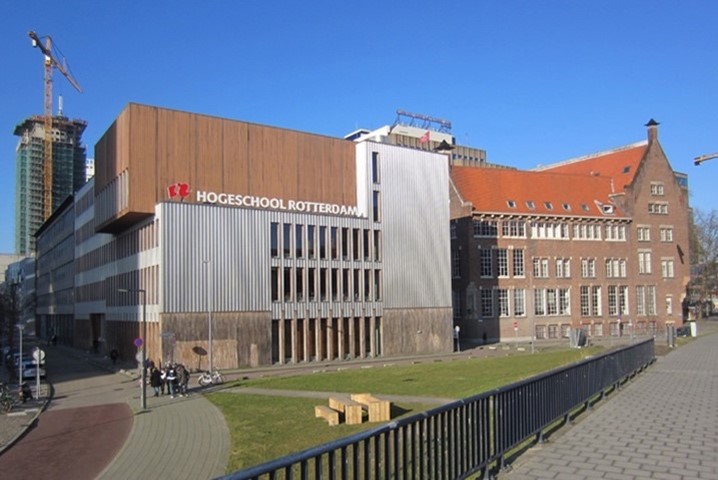
Willem
de Kooning Academy Rotterdam As the Willem de Kooning Academy initiated the webinar, educator and researcher Aldje van Meer explained the current research trajectory: The Living Stations. Although, the WdKA has a partnership with BlueCity Lab – she mentioned that the demand for a biolab both from students and teachers is growing within the institute. This is not only because of practical reasons, it is stressed by the fact we are facing an ecological crisis and the urgency to not only talk but actually take action in regard to the issues and give students a perspective for action. 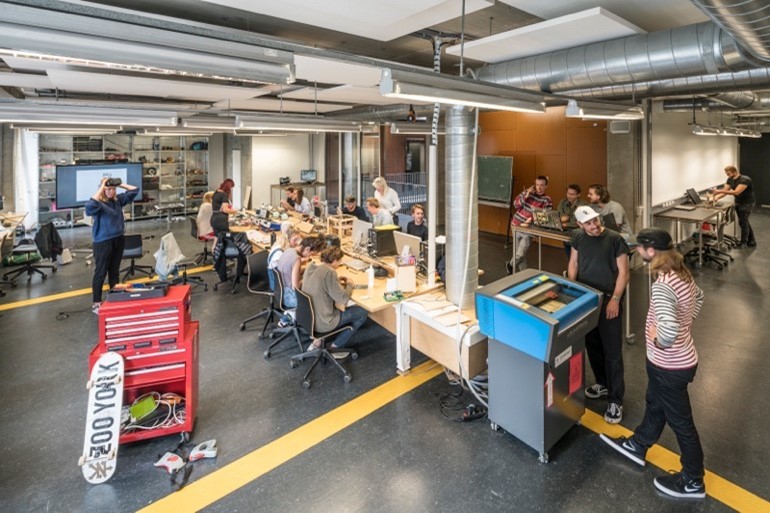
Willem de Kooning Interaction Station
Besides a lab facility, van Meer also mentioned the development of educational programmes and pathways. Willem de Kooning offers students creative skills and knowledge in the ‘stations’, learning environments with machinery, equipment and technologies in which the student is researching topics through making. ‘’Where the stations focus more on a certain technology, The Living Stations are departing from a certain context’’, Aldje explained. Topics like water, energy, soil, wind and waste materials are connected to local contexts. She concluded her presentation with a call to the ELIA/ETHO network to form a community of people with similar interests and plant seeds for further conversation.
Jennifer Bissonnette - Rhode Island School of Design
Dr. Jennifer Bissonnette was the first speaker. As interim director of the Edna W. Lawrence Nature Lab at Rhode Island School of Design in Providence, USA, she supports research on science visualisation and communication. Projects involve sustainable, biophilic and regenerative design, and corporate partnerships interested in employing biomimicry principles and scientific understanding to develop regenerative design strategies. 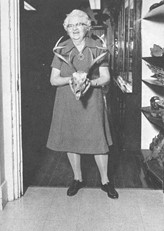 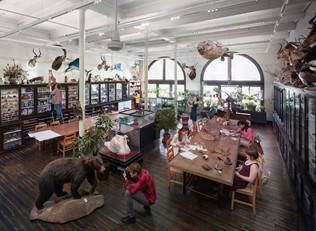
R: RISD Nature lab, L: Edna Lawrence She has an impressive CV as ecologist, marine scientist and educator whose work focuses on human-nature connections, living systems and systems thinking to foster innovative design solutions to pressing environmental and societal challenges.
R: RISD Nature lab, L: Edna Lawrence
The Nature Lab has an extensive natural history collection that forms the heart of the lab. More than 80,000 specimens are collected and kept in tiny drawers. The main room facilitates classes - from children to college and undergraduate students - and serves as a lending library. Drawing teacher Edna W. Lawrence founded the Nature Lab back in 1937 and began filling the completely empty library shelves that remained in the space with seed pods, pine cones and shells she picked up on her walks. Edna believed every student needed to have a sense of nature and how she provided endless inspiration in terms of colour, pattern form and structure. 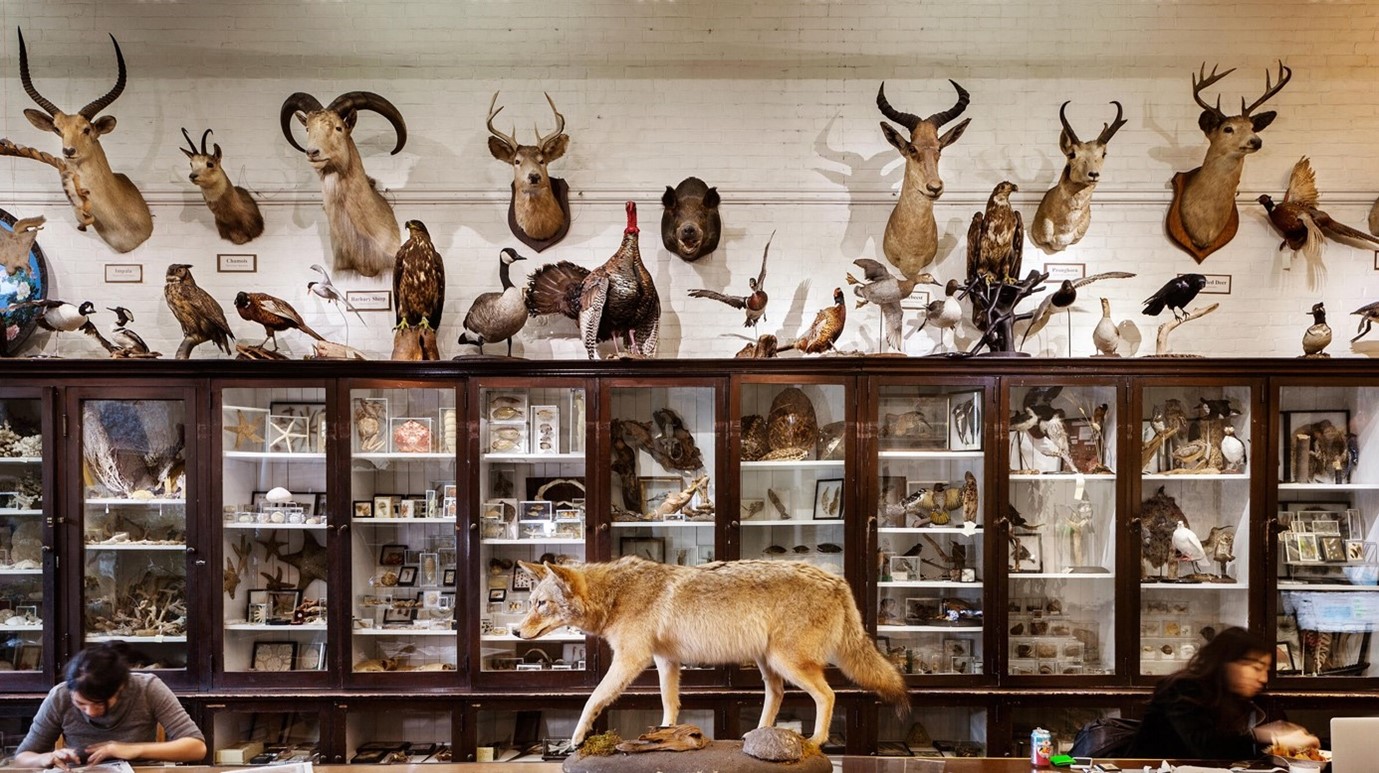 RISD Osteology lab
Next to the main room there was the Osteology Lab, housing staff that guide students deeper into the knowledge behind the specimens.
‘’When Edna left after serving 40 years, she suggested purchasing a microscope to start looking at nature at different scales. This resulted in the Imaging Lab where students can use a full complement of stereo microscopes.’’
The large specimen collection gives students endless inspiration, with the stereo microscopes, compound microscopes all the way up to a scanning electron microscope, they explore the specimens from real close. Other equipment includes high speed video cameras, GIS stations, 3D scanners. On the RISD Flickr account you can view images from the collection. They also have a Sketchfab account that has been a great resource during the pandemic when students couldn't come in. Jennifer emphasises that visualising nature – making the invisible visible and telling stories of the natural world to the public is made possible by the equipment.
The National Science Foundation is one of the partners that they work with. Jennifer highlighted some of the work by students. Beatrice Steinert created a children's story book based on Plankton, trying to gain empathy in people so that they feel a connection to the natural world and therefore hopefully instilling a conservation ethos within them. Other visualisation projects involve the collaboration with local scientists on natural phenomena in the Illuminated Bay. With their science community they are thinking about ways of encouraging not just the one way flow of information from the science to the art and design community, but bringing the scientists themselves into the studio spaces.
In one of the programmes they took students into the school's museum and educated them on visual literacy - how do they think of their work in innovative ways? Both in terms of communicating how they do their work, the outcomes of their work, but also thinking about what this kind of visual and spatial thinking can bring to their science, and possibly change the trajectory of how they approach their research. RISD’s Nature Lab is also partnering with corporate partners like Hyundai who is one of the financial supporters. They are interested in how the natural world can inform design solutions for our future cities and mobility.
One of the questions we ask our speakers is about the experts connected to the lab. RISD collaborates with entomologists (insect scientists) and botanists who are taking the students out on field trips to look at the organisms in the wild and bring them to the lab for research. Students take inspiration from organisms with wings for example, asking how nature handles rain on surfaces. Extracting information that could be the future of mobility for example.
RISD’s Biolab is designed and created by students where they can work and research materials for a regenerative future, where the ecosystem is centered instead of the human. The National Science Foundation funded the space where students can conduct biodesign research and experiments. The space includes an aquaponics system where alternative proteins in the form of fish are being grown. Student Tareq Alzawawi researched egg shell waste that came out of local restaurants and bakeries and created a leather like material, he used the bio design makerspace. Staff have a technical background – for example textile professors. Other materials being explored are fungal mycelium and fabrics from wheat grass roots, inspired on the work of Diana Scherer. 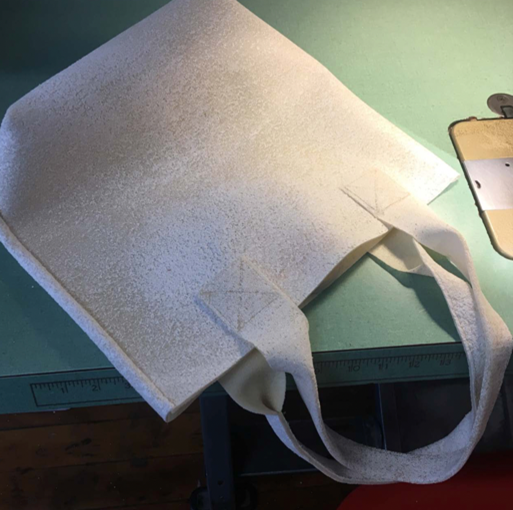 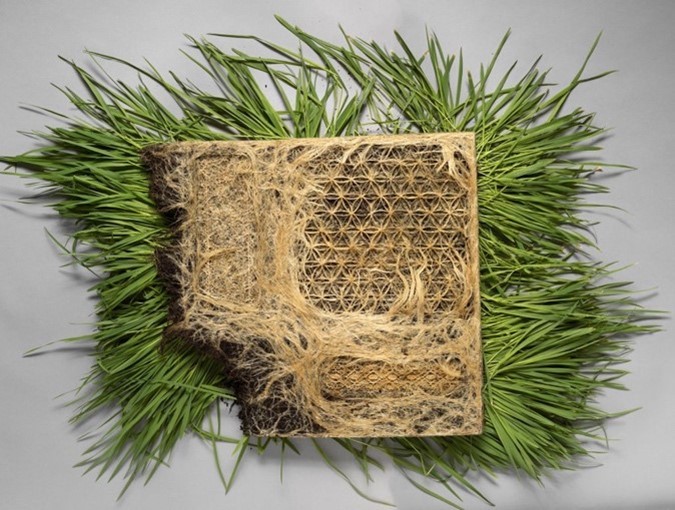
L: Eggshell ‘leather’ by student Tareq Alzawawi R: Woven roots by Diana Scherer Biolab Facilities
The lab has basic tools and a laminar flow hood to work with – for example pigment producing bacteria. Jennifer pointed out that they don’t work with any materials that are beyond Biosafety Level 1, and are very cautious of making sure that they do not cultivate anything that could be a human pathogen, and cultivate anything at body temperature. 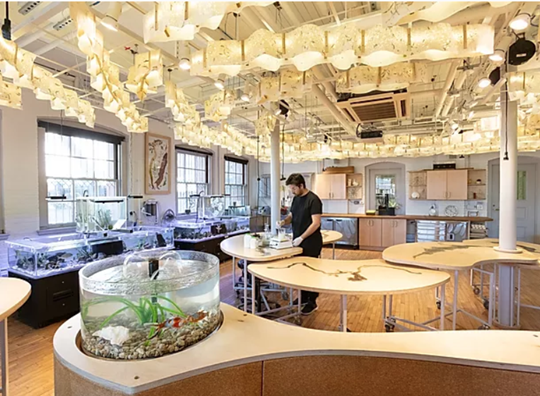
Petri dishes are not opened after inoculated with organisms unless it is submerged in a bleach solution or autoclaved before disposal.
They taught classes on aquaponics and coached student groups that were taking part in the international Biodesign Challenge. Jennifer emphasised, that at the heart of what they do, is really trying to encourage this human nature connection and to strengthen students' understanding that everything that they do, everything that they make and design, to go out into the world can have an impact on the local environment. Making students exquisitely aware of the fact that whether or not they're doing it intentionally, they're having an impact, and so impressing upon them the importance of doing it intentionally. Jennifer ends with advice we all know, but have to bring into practice: ‘’co-create with the natural world instead of human beings dominating it and creating disruptions, thinking about ways that we can integrate better into it.’’
After Jennifer’s talk we had some questions from the audience, especially on the size and staff of the space. RISD’s Biodesign Makerspace is around 900 square feet (± 83 square meter), and was built on a very low budget. Jennifer also warned us to critically think about electrical capacity, especially for hot plates and any other heating equipment. Though, she could use more space than they have right now also to increase the programmes they offer. Equipment is not built by students for the lab. The National Science Foundation funding enabled them to purchase some of the equipment like the hot plates and 3D printers. RIDS’s lab has six employees including Jennifer, three biologists, someone who is operating the Image lab and the lab manager and an administrative assistant who handles outreach. Check out RISD’s Labs here and read further.
Louise Dumon – Ghent University & Prototype Circulair
The second speaker was Louise Dumon. She works at the University of Ghent, Belgium. At the campus in Kortrijk she is working on different projects to introduce sustainability and more specifically circularity in the education program of Industrial design engineers. She is currently working on the project “Prototyping Circulair”, to install and integrate a bio-makerspace in the curriculum of industrial design engineers to trigger circular design competences. This lab is a collaboration between UGent, the bio-innovation agency Glimps.bio and Switchrs.
She kicked off by introducing Prototyping Circulair which is a project with three partners including Glimps and Switchrs, both helping other companies transitioning to a bio or sustainable future. 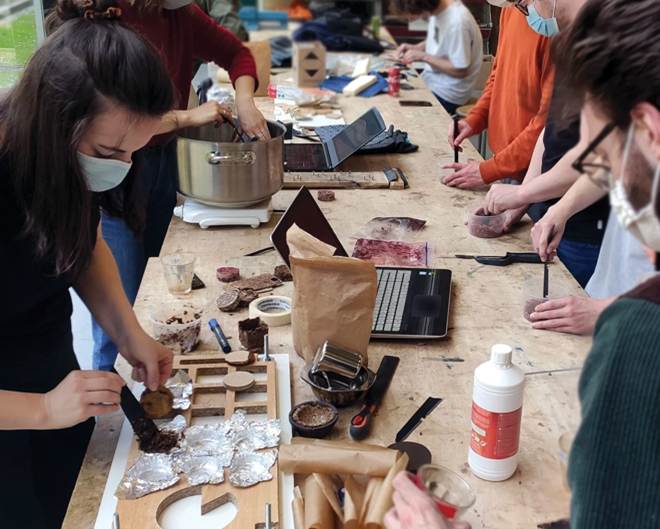 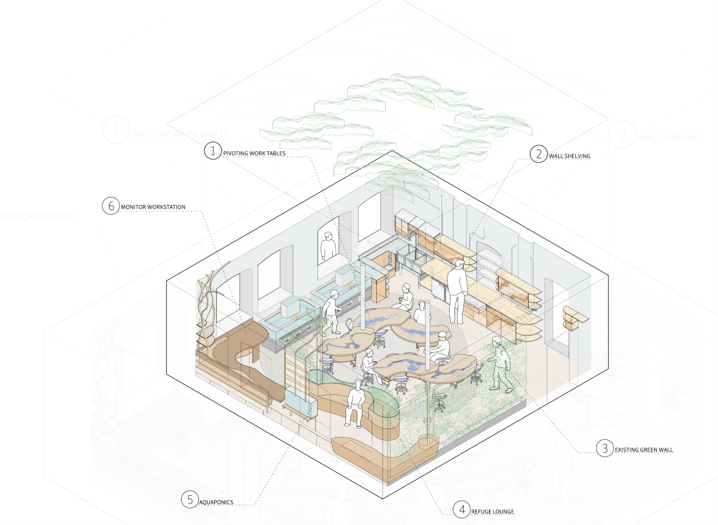
Louise works together with colleague Francesca at design.nexus, located in Kortrijk where they are connected to the industrial design engineers, a combination between product design and industrial engineering.
Louise is explaining that sustainability is more important to take nature and people into account and it needs to be implemented more in companies. Students are designing products and creating a lot of prototypes. They included sustainable design thinking in the prototype process which is normally quite linear and is producing a lot of waste. Even the prototypes have a high value, using durable materials. That’s why they work with compostable materials for prototyping. 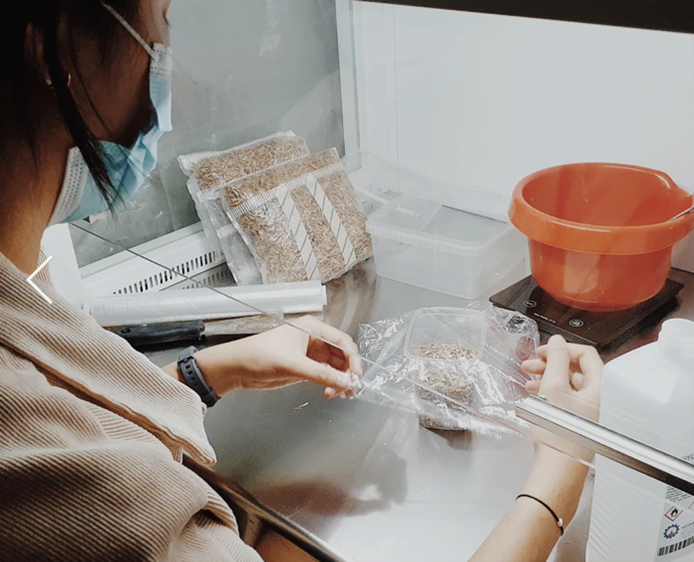
Louise sees a movement going on where students DIY create biobased materials. Where they would normally use a silicone mould for copying shapes, they now use a mixture of coffee waste and agar agar which is an extract of seaweed.
The goal of Prototyping Circulair is to develop a sustainability mindset in young designers by using these biobased circular materials, starting with the prototyping phase.
The university has implemented a bio maker space including a workshop where students already prototype and work together. They also have a chemical, woodworking and textile lab. The bio makerspace is part of the bigger workspace. Students from the courses cybernetics and system-oriented design tested the lab qne discovered some challenges. For example, the clay printer, how can you set up a self-sustaining system in which other students can use this printer with biobased materials? They were giving the input materials, the recipes and created DIY videos and organising workshops. Each week, a student team posted pictures and text about how they went through the process. Different techniques were shown and explained so that others can use the same.
Bio makerspace
The bio makerspace included tables, small equipment, consumables and ingredients. Bins also include biowaste (the yellow bins). Next to the sink was the cleanroom where the laminar flow hood, incubator and autoclave was placed. There is also space where pots, pans, blenders, shredders and tiny equipment is stored.
The (waste) materials students work with is sometimes collected by them and stored carefully. How can knowledge be generated in the space? Students are creating videos, DIY kits and workshops which can be found on the website. The manufacturing process, machines, tools and input materials are very linked together. Louise said that they noticed that some students had difficulty with the fact that compostable materials are not standard. They had to find a balance between how to handle the material, design with it and accept that it acts differently.
The curriculum of the students is designed in a way that sustainability is the main topic throughout their programme. In their second year, they start by introducing a circular economy. The third year is about cybernetics and systems, where the focus lies on DIY and bio-based circular materials. The fourth year is about ethics, diversity and inclusion. To make students acquainted with biobased materials, they created a material library to start prototyping. The library includes DIY materials and biobased materials. One of their students was researching bread waste as a replacement for toxic foam, which is used a lot in shape and form research. A lot of knowledge is also shared via the Instagram page and Prototype Circulair website.
Pirjo Kääriäinen – Aalto University
The last speaker was Pirjo Kääriäinen, a material enthusiast and textile specialist, working as an Associate Professor in Design and Materialities at the Aalto University, Finland. She operates between research and practice, and she is involved in several material research projects focusing on bio-based materials. Since 2011 she has been developing interdisciplinary CHEMARTS collaboration between the School of Arts, Design and Architecture (ARTS) and the School of Chemical Engineering (CHEM). CHEMARTS is aiming to inspire Aalto University students and researchers to explore bio-based materials together, and to create new concepts for their sustainable use.
Aalto University is located in Espo, near Helsinki and merged from different disciplines, business, design and several technical schools. Aalto houses 12,000 students. The university has seven research focus areas, one of them is materials and art & design. One of the ongoing research projects is about cellulose, Pirjo is showing an image of structural coloured wood. It was made by a design student collaborating with a student from Chemical Industry Engineering.
Pirjo has been working on the Chemarts project for over 10 years. Her work is built on collaboration. 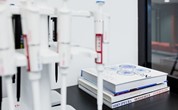 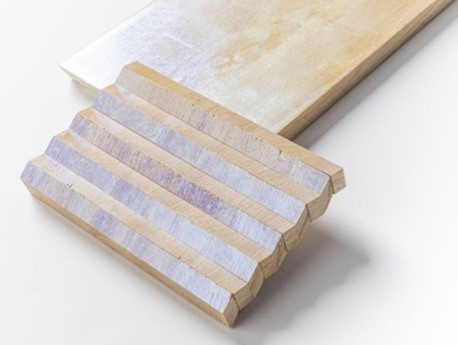
CHEMARTS is a long-term strategic collaboration between two Aalto University schools, The School of Chemical Engineering (CHEM) and The School of Arts, Design and Architecture (ARTS). The schools joined forces with the aim to invent new ways to harness wood and cellulose. The main idea is to inspire students and researchers to explore bio-based materials together. The collaboration started together with Pirjo’s colleague Tapani Vuorinen, who is a professor in wood chemistry. ‘’Finland has a long history in working with wood and paper, where cellulose forms the basis, this expertise is now used for new purposes’’, Pirjo said. 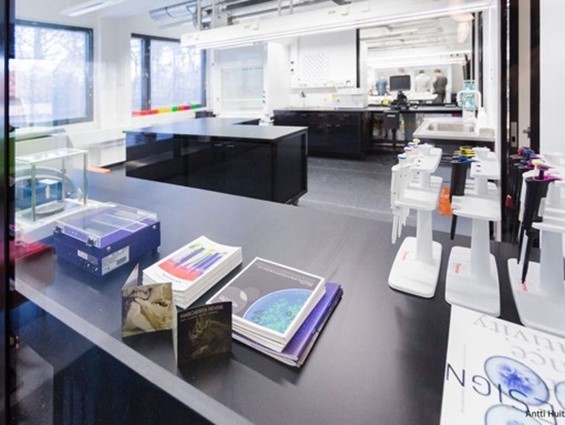
The Chemarts Lab has a dedicated space for courses, before they used other laboratories connected to the School of Chemical Engineering. Having that collaboration, students can utilise equipment that exists for research purposes which opens up new possibilities. Chemarts is a mixture of a chemistry lab and a kitchen with equipment you can find in any ordinary kitchen. They don’t have a specific lab manager; introduction courses are done together with teaching staff and assistants. They work with biobased materials, but not with living materials (yet), for example fungal or bacteria strains. The laboratory safety course is mandatory for students and teachers before entering the space even though they don’t work with hazardous materials.
Student examples
Students are working with different materials or focus on recycling of certain materials and explore how those could be used in a repurposed way. You can find a number of student projects over here. Some of the projects are from the international summer school that Chemarts organised called Nordic Biomaterials by Chemarts where they managed to welcome 60 European students. Chemarts also created this cookbook in 2020 that you can download for free to share with others educational partners and students.
Currently, they are running a workshop at European level, as part of Datemats, an Erasmus+ programme, that is about how to teach emerging materials and technologies. On 7 April, they organised a hybrid event at Politecnico di Milano in Milan (also part of the project).
Next to the Chemarts lab there is the Biofilia lab, which is a base for biological arts, more focusing on bio art and enabling bioart related projects. The lab does have a laboratory manager, activities are done under biosafety level one. The lab is equipped for hands-on research and creative experimentation and it provides the basic tools for molecular biology, tissue culture and engineering and microbiology. One of the students was working with micro-organisms that produced a striking pink colour. 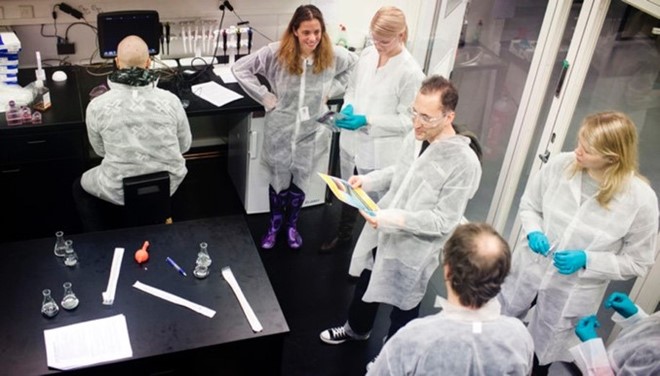
Biofilia lab Next to the Chemarts lab and Biofilia they opened the Biogarage Lab (click here for the virtual tour including lab equipment!). Biogarage is an open GMO lab operated by Aalto University located at the Aalto Design Factory. Biogarage is funded by Jenny and Antti Wihuri Foundation. Students can apply to work via an introduction form, the project is being viewed and accepted by laboratory staff. Besides the tree facilities, one big open space without any specific permission is something that they don’t have. The next step is to create a space for students to explore more materials and organisms, like mycelium.
Pirjo is mentioning if you want to start a lab yourself, start with a strong concept, very good (staff) support and network, both inside and outside the academy or faculty to create a sustainable facility. It takes time to develop labs like this. The strategy should fit a short and long-term vision. Who is responsible for funding, equipment and maintenance, and not to forget to update the knowledge that is coming from the field. She emphasises the human aspect of working on new topics.
‘’Especially when you work with different disciplines, you need to have people who love these topics. They need to have patience and need to respect each other to have a shared goal. And definitely need to be able to communicate these aspects to students and staff.’’
Communication is key, even when you work on the same topics. Pirjo is referring to a water-resistant coating for textiles. Science staff is communicating about these themes via papers, whilst students are more on the practical side where they capture the same research via photos and a prototype. ‘We have the same goal, but we have different ways of communicating’.
After Pirjo’s talk Emma asked a question about the elements of the introduction course. What kind of organisms do they work with? Pirjo mentioned the ABC course at Biofilia that mainly focuses on working methods, procedures about safety and how to design with systems. When they want to work with organisms, like the pigment producing bacteria, they start figuring out which one is most suitable. The lab manager assists and brings in the knowledge that is necessary. Be part of an active and inventive technical community. Join ETHO today!
|